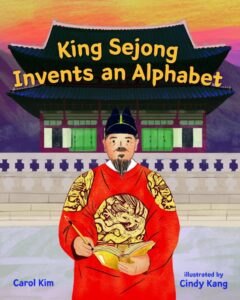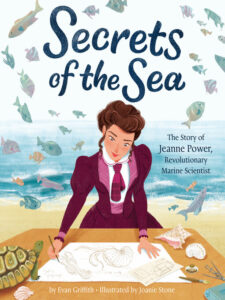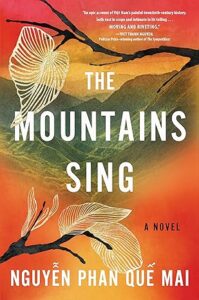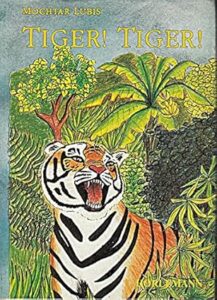The previous blog post was an introduction to picture book biographies. This blog post is about the most important element for creating a story: the Narrative structure in biographies.
Why is the Narrative Structure needed?
The Narrative Structure is the framework of the story. Without it, the story collapses—no matter how well-built the characters, setting, and thematic message, … are.
To establish a Narrative Structure (Beginning-Middle-End), we need an Inciting Incident to start the story’s engine with it. Next a Middle to carry the story towards the Climax and done. The End. It sounds easy (only sounds. The truth is different).
Creating the Narrative Structure in a biography is much harder than doing so in a story. In writing a biography, the writer’s options are limited to the events that happened to the character. It is like building a house from the existing material. You cannot ask for even one extra brick!
The million-dollar question is how to pull it off!
To teach myself the Narrative Structure in biographies, I analyzed many of them and still do to learn more. I share this only as a suggestion. It may not work well for you because everyone should find her approach to doing things!
My way is that take a pencil and a piece of paper. As I read the biography, for each spread I summarize it in one or two words (or a short sentence). For example, (1) Setting, (2) who would she become, (3) searching around. When I finish, I have a list of short notes that gives me an overview of the book.
Next, I look for the Plot Points (Inciting Event, Midpoint, etc) and analyze the structure. Do the Beginning and End, each, take 25% of the story as the rule of thumb says? Do all stories have all Plot Points? …
Below I share three example analyses.
- Solving a problem: THE BOY WHO PLANTED A FOREST (2019) by Sophia Gholz and Kayla Harren
- Story of an invention: KING SEJONG INVENTS AN ALPHABET (2021) by Carol Kim and Cindy Kang
- Become a scientist: SECRETS OF THE SEA (2021) by Evan Griffith and Joanie Stone.
Let’s go through them.
Example 1: THE BOY WHO PLANTED A FOREST
THE BOY WHO PLANTED A FOREST (2019) by Sophia Gholz and Kayla Harren

- Beginning
The boy (Protagonist) learns that because rainy season, the island is shrinking and animals are stranded. This is Inciting Incident. He is worried about animals and speaks to other villagers. The boy’s reaction to the Inciting Incident is Plot Point I. Thus, on spread 3, the Beginning ends.
- Middle
Village’s elders give the boy some saplings and on the following spreads, we see the boy’s effort to plant trees. On spread 8, he planted a forest, and animals are returning. This is Midpoint. After this, the boy (now the man) faces a different type of problem: people are worried about the animals. Hunters and those who cut the trees for the wood. He solves problem after problem.
- End
The End of this biography is relatively short. The last spread of the book is the resolution.
Example 2: KING SEJONG INVENTS AN ALPHABET
KING SEJONG INVENTS AN ALPHABET (2021) by Carol Kim and Cindy Kang

- Beginning
The first 5 spreads explain the story setting: the king’s interest in books, and the illiteracy of the majority. The Inciting Incident comes on spread 5 when a villager harms his father. King blames himself which is Plot Point I and the Beginning finishes.
- Middle
King commanded to publish a book which is useless because most people are illiterate. So, he decides to invent an alphabet for the Korean language. On the following spreads, we see his effort. On spread 10, we read that, in 1443, the king released his invented alphabet. This is the Midpoint. The next spread shows the opponents.
- End
The last 3 spreads make the End of the story. How people are benefited from the alphabet. The last spread shows the happy king.
Example 3: SECRETS OF THE SEA
SECRETS OF THE SEA. THE STORY OF JEANNE POWER, REVOLUTIONARY MARINE SCIENTIST (2021) by Evan Griffith and Joanie Stone.

- Beginning
Spread 1 and 2 establish the story setting: a young woman has to leave her career after marriage and move to Sicily. The last sentence of spread 2 reads: “Who would she become?”. This is the Inciting Incident. The character looks around (spread 3-4), and she makes her mind up: she wants to become a naturalist who studies sea creatures alive. This is Plot Point I—the character’s reaction to Inciting Event. Beginning finishes on spread 5.
- Middle
Jeanne makes a tank, designs her equipment, gets animals from fishermen, and studies the animals in the tank. These spreads show the character’s growth: from a confused woman to a person who acts toward her goal. She presents her results at a nearby academy and becomes the first female member. This is Midpoint-–from a confused woman to an accepted naturalist.
Jeanne moves with her husband to England by land. But during transportation by a ship, her research and work sink and gone. Here, spread 11, is Plot Point II—the character lost everything. This is the end of Middle.
- End
She repeats her studies and proves them to her peers. This is the Climax. See how the Inciting Incident and Climax work together like a question and an answer. She didn’t know what she would be (Inciting Incident) and she becomes a female naturalist, worldwide accepted (Climax).
What I learned
What I notice is that the length of the Beginning, Middle, and End varies from story to story which makes sense.
Yet, biographies with a rigid Narrative Structure have all one specific feature. When the Inciting Incident strikes the Protagonist, he/she pursues a goal (aka. Plot Goal in storytelling). All the information in the Middle and End is aligned with that goal. The Protagonist doesn’t ramble around in the story. All the obstacles and information are focused on the Plot Goal, like a laser beam.
In the contrast, biographies with flimsy Narrative Structures start from childhood with infodump and report (not show) the character’s achievement. Their Protagonist doesn’t decide to achieve a goal. He/she just simply gets there! Therefore, they don’t read like a story, but a magazine report or a Wikipedia text.
In the first category, the role of opponents/obstacles/failures are bold and mighty which makes a page-turning story. Whereas in the second category, the opponents/obstacles/failures are either very easy-to-handle or don’t exist at all. Their Protagonist is destined to be successful, from early childhood!
In the next blog post, I will discuss Antagonist types.
My picture book biography blog post series includes:
- Introduction to picture book biographies link
- Narrative Structure (this blog post)
- Selecting timeframe link
- Point Of View (POV) link
- Infodump link
I write regularly blog posts about the craft of writing children’s books. PictureBookPedia is all about picture books and ChapterBookPedia is all about chapter books. My quarterly newsletter sends the list of new blog posts to your inbox.





These posts on writing picture book biographies are excellent! I can’t wait to begin revisions on my rough manuscripts! Thank you!
I am happy to hear this, Pamela.